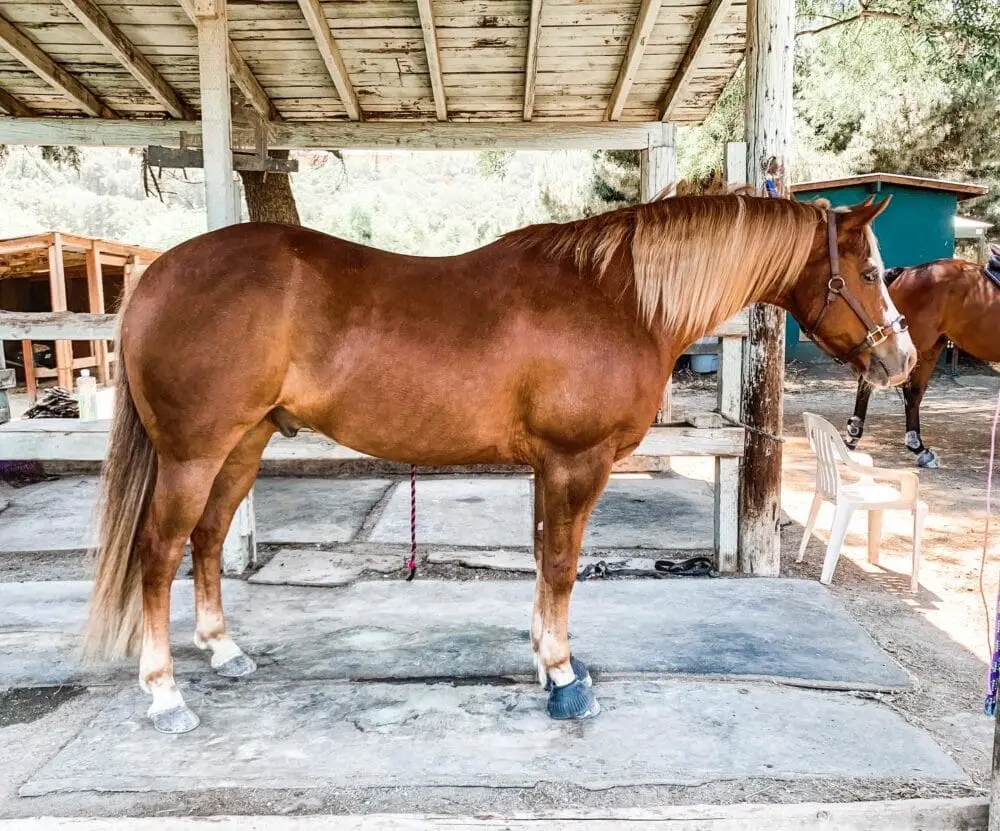Horses and ponies are both members of the equine family, but they have distinct differences that set them apart from each other. Many people use the terms “horse” and “pony” interchangeably, but there are specific characteristics that define each one. In this article, we will explore the key differences between horses and ponies, including their physical attributes, behavior, and uses in various activities.
Size and Physical Characteristics

One of the most obvious differences between a horse and a pony is their size and physical characteristics. Horses are generally taller and larger in build, standing at least 14.2 hands (58 inches) at the withers. They have a longer stride and a more powerful frame, making them suitable for carrying heavier loads and covering long distances at greater speeds. In contrast, ponies are shorter in stature, typically standing under 14.2 hands. They have a compact, sturdy build with shorter legs and a broad, round barrel. The overall proportions of a pony are smaller compared to a horse, making them well-suited for small riders and lighter workloads.
Temperament and Behavior

Horses and ponies also exhibit different temperaments and behavior patterns. Horses are often known for their spirited and energetic nature, requiring experienced handling and training to manage their strong personalities. They can be more high-strung and sensitive to their surroundings, reacting to stimuli with quick movements and heightened alertness. On the other hand, ponies are often described as hardy, intelligent, and sure-footed animals with a more laid-back demeanor. They are known for their resilience and adaptability, making them suitable for various tasks and environments. Ponies are also known for their strong sense of loyalty and bond with their human handlers, often forming deep connections with their riders.
Uses and Activities

The differences between horses and ponies extend to their uses and activities in various disciplines. Horses are commonly utilized for riding, driving, and competitive sports such as show jumping, dressage, and eventing. Their larger size and athletic abilities make them well-suited for carrying riders of all ages and skill levels, as well as participating in demanding equestrian events. Additionally, horses are often employed for work in agriculture, ranching, and transportation, where their strength and endurance are valuable assets.
Ponies, on the other hand, are versatile animals that excel in a wide range of activities. They are frequently used for children’s riding programs, therapeutic riding, and leisurely trail riding due to their manageable size and gentle nature. Ponies are also popular in driving competitions, where their agility and nimbleness are showcased in various driving classes. Furthermore, ponies are often employed in educational settings and petting zoos, providing valuable interaction opportunities for young children and individuals with special needs.
Feeding and Care

The dietary and care requirements for horses and ponies differ based on their size, metabolism, and activity levels. Horses typically have higher energy and nutrient needs due to their larger body size and increased physical demands. They require ample forage, quality hay, and balanced concentrates to support their muscle development, stamina, and overall health. Additionally, horses may need specialized feed supplements and regular dental care to maintain their optimal condition.
In contrast, ponies have a more efficient metabolism and can thrive on a diet that is often more moderate in comparison to horses. They have a propensity to gain weight easily, so careful management of their diet is essential to prevent obesity and related health issues. Ponies benefit from access to grazing pasture, high-fiber forage, and controlled portions of concentrates to meet their nutritional requirements without excess calorie intake. Furthermore, regular dental check-ups and hoof care are essential for maintaining the well-being of ponies.
Adaptability and Environments

Another key difference between horses and ponies lies in their adaptability to different environments and living conditions. Horses are commonly found in diverse climates and landscapes, ranging from open plains and mountainous regions to urban equestrian facilities. They are well-suited for a variety of riding and working environments, showcasing their versatility and resilience in different settings.
Ponies, on the other hand, have a remarkable ability to thrive in challenging environments and rugged terrain. They are known for their resilience in harsh climates, including moorlands, marshes, and hilly landscapes. Ponies are often utilized in conservation grazing projects to manage natural habitats and preserve biodiversity in environmentally sensitive areas. Their hardy nature and low maintenance requirements make them well-suited for extensive grazing and sustainable land management practices.
Health and Longevity

The health and longevity of horses and ponies are influenced by various factors, including genetics, diet, exercise, and veterinary care. Horses generally have a longer lifespan compared to ponies, with some breeds living well into their late twenties or thirties. Proper nutrition, regular exercise, and preventative healthcare measures, such as vaccinations and parasite control, contribute to the overall well-being and longevity of horses.
Ponies, while typically hardy and long-lived, may be prone to certain health conditions associated with their size and breed characteristics. They can be susceptible to conditions such as obesity, laminitis, and metabolic disorders if their diet and exercise regimen are not carefully managed. Regular veterinary examinations, proper hoof care, and monitoring of body condition are essential for ensuring the health and longevity of ponies throughout their lives.
Interested in equine differences? Explore our articles on donkey and horse disparities, horse temperament meanings, and average horse weights for a deeper understanding of the equestrian world!
Conclusion

In conclusion, the differences between horses and ponies are evident in their size, temperament, uses, care requirements, adaptability, and health considerations. Understanding these distinctions is essential for selecting the right equine partner based on individual needs, preferences, and intended activities. Whether it’s the majestic stature of a horse or the endearing charm of a pony, both animals hold a special place in the world of equestrianism, enriching the lives of riders, caretakers, and enthusiasts alike.



